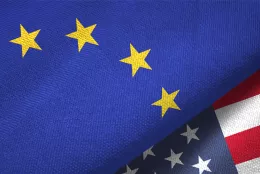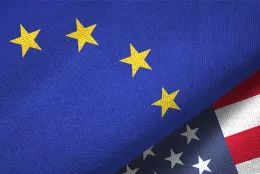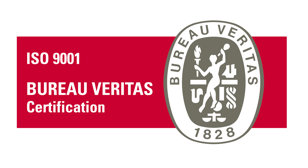Article

Enlarged Board of Appeal of EPO issued its much awaited decision G 2/21 (“plausibility”)
The EPO's Enlarged Board of Appeal recently issued a G 2/21 "plausibility" decision regarding the possibility of taking into account experimental data submitted post-filing to support a technical effect when assessing inventive step.
Preliminary remarks
The problem-solution approach recommended by the EPO classically includes the following steps:
i) determine the closest prior art to the claimed invention (CPA),
ii) determine the difference between the claimed invention and the CPA,
(iii) determine the technical effect of the difference,
iv) formulate the objective technical problem in view of the technical effect, and
v) examine whether a person skilled in the art, starting from the CPA and seeking to solve the objective technical problem, would have arrived at the claimed technical solution in an obvious way.
In order to formulate the objective technical problem, the "problem-solution" approach requires evaluating the technical effect obtained by the claimed invention compared to the closest prior art.
In some cases, the EPO may require the provision of comparative data to show the advantages of the claimed invention over a prior art document that is considered by the EPO to be the CPA but that the owner may not have been aware of at the time of filing.
Thus, in order to justify a technical effect and to argue in favor of inventive step, the applicant/patent proprietor may have to submit to the EPO experimental data that was not disclosed in the application as filed.
In decision T116/18, the Board of Appeal 3.3.02 referred to the Enlarged Board of Appeal (EBA) the question of which criteria determine whether the EPO can rely upon experimental data submitted after filing (hereafter “post-published data”) in order to prove the existence of a technical effect.
Reminder of case T116/18
This case concerns the validity of European patent EP 2 484 209 claiming a composition comprising a combination of known insecticides. The patent highlights a synergistic effect, with examples demonstrating a synergy of certain combinations against two particular insects, the striped moth (Spodoptera litura) and the cabbage moth (Plutella xylostella).
In opposition, the opponent submitted data showing a lack of synergy for certain combinations covered by the patent. In response, the patent proprietor submitted additional data showing a synergistic effect against the rice borer (Chilo suppressalis).
The Board of Appeal considered that the question of whether the data submitted by the proprietor should be taken into account or not was fundamental to the assessment of inventive step:
- if these data were taken into account, the objective technical problem could be formulated as that of providing a composition in which the insecticides act synergistically against the rice borer, and the solution was then inventive,
- on the other hand, if these data were not taken into account, the objective technical problem had to be redefined as providing an alternative insecticidal composition, and the solution was then obvious.
The Board of Appeal considered that the question of the circumstances in which post-published data can be relied upon in support of the inventive step was essentially the subject of three divergent lines of case law:
- according to a first line of jurisprudence called "ab initio plausibility", these data can be taken into account when it was plausible, at the time of filing, that the alleged technical effect is achieved;
- according to a second line of jurisprudence called "ab initio implausibility", these data are admissible in all cases, except when there are legitimate reasons to doubt, at the time of filing, that this technical effect is achieved;
- Finally, a third line of jurisprudence rejects the concept of plausibility ("no plausibility").
The Board of Appeal referred the matter to the Enlarged Board of Appeal (EBA) in order to clarify the circumstances under which an applicant or patent proprietor can legitimately rely on post-published data to defend inventive step.
The first question of the Board of Appeal in case T116/18 was whether post-published data should be disregarded as a matter of principle if there is no proof of the technical effect claimed by the proprietor in the patent application as filed, i.e. if the claimed technical effect is supported exclusively by the post-published data.
In questions 2 and 3, which could only be answered if the answer to the first question was yes, the Board of Appeal asked the EBA to indicate whether the test to be followed was that of "ab initio plausibility" or that of "ab initio implausibility".
In its preliminary opinion dated October 13, 2022, the Enlarged Board of Appeal confirmed the admissibility of the referral and the relevance of the referred questions.
Decision G2/21
The G2/21 decision was issued on March 23, 2023.
In response to the first question of the Board of Appeal, the EBA considers that the free evaluation of evidence is a universally applicable principle to which the question of plausibility is no exception. This point is clearly stated in point 1 of the order of the G2/21 decision:
"1 - Evidence submitted by a patent applicant or proprietor to prove a technical effect relied upon for acknowledgement of inventive step of the claimed subject-matter may not be disregarded solely on the ground that such evidence, on which the effect rests, had not been public before the filing date of the patent in suit and was filed after that date."
The EBA therefore decides that data submitted post-filing to demonstrate the existence of a technical effect in support of inventive step cannot be disregarded on the sole ground that it was submitted after filing.
Since the answer to the first question was no, the EBA did not have to answer questions 2 and 3. Decision G 2/21 does, however, provide further guidance on the issue of taking post-published data into account, when submitted in support of inventive step.
First, the EBA considers that the notion of "plausibility" is not provided for in the EPC, nor does it correspond to any legal concept. It cannot be considered as a distinct criterion of patentability1. The EBA considers that it is only a generic term ("catchword") encompassing all matters relating to the existence or non-existence of an alleged technical effect2.
The EBA then considers the question of the when it is possible for the EPO to rely on post-published data to show the existence of a technical effect for acknowledgment of inventive step.
After a detailed analysis of the case law, the EBA concludes that, contrary to what the Board of Appeal suggests in the wording of its questions 2 and 3, the question of the possibility of relying on post-published data in support of inventive step cannot be limited to a simple alternative between the "ab initio plausibility" and the "ab initio implausibility" approaches3.
The EBA considers that this issue must be addressed more broadly, and that "[t]he relevant standard for the reliance on a purported technical effect when assessing whether or not the claimed subject-matter involves an inventive step concerns the question of what the skilled person, with the common general knowledge in mind, would understand at the filing date from the application as originally filed as the technical teaching of the claimed invention."4.
It concludes by proposing the following criterion for post-published data: "The technical effect relied upon, even at a later stage, needs to be encompassed by that technical teaching and to embody the same invention, because such an effect does not change the nature of the claimed invention."
This criterion, repeated in point 2 of order of the G2/21 decision, seems to require three cumulative conditions for data submitted post-filing to be taken into account in the assessment of the inventive step, namely that the data must relate to a technical effect:
(i) "encompassed by [the] technical teaching [of the application as filed]",
(ii) "embodied by the same originally disclosed invention", and
(iii) "[it] does not change the nature of the claimed invention.
The EBA makes it clear that the ability to rely on post-published data is much more limited in terms of sufficiency of description. In particular, where a therapeutic effect is claimed, the EBA states that to meet the sufficiency of description criterion, evidence of the therapeutic effect must be provided in the application as filed, and that a failure to do so cannot be remedied by post-filed evidence5.
Conclusions
The decision G 2/21 confirms that post-published data submitted in support of the inventive step cannot be excluded as a matter of principle, even in cases where such post-published data is the only evidence of the claimed technical effect.
However, the test proposed by the EBA seems to imply that from now on evidence submitted post-filing will only be considered in support of inventive step, in order to demonstrate a given effect, where that technical effect is "encompassed by [the] technical teaching [of the application as filed]", "embodied by the same originally disclosed invention" and "does not change the nature of the claimed invention". However, the EBA does not provide any details on how to assess these three conditions and acknowledges” the abstractness of some the aforementioned criteria6. The conditions set out in G 2/21 must therefore be assessed on a case-by-case basis.
1 Point 92 of the reasons
2 Point 58 of the reasons
3 Point 71 of the reasons
4 Point 93 of the reasons
5 Point 77 of the reasons
6 Point 95 of the reasons
































